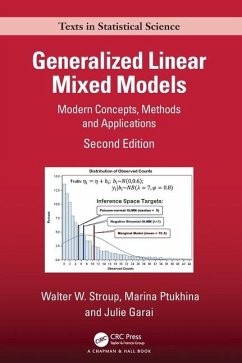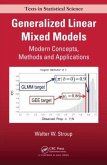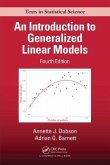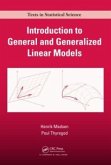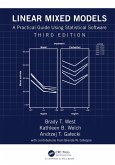Generalized Linear Mixed Models: Modern Concepts, Methods, and Applications (2nd edition) presents an updated introduction to linear modeling using the generalized linear mixed model (GLMM) as the overarching conceptual framework. For students new to statistical modeling, this book helps them see the big picture - linear modeling as broadly understood and its intimate connection with statistical design and mathematical statistics. For readers experienced in statistical practice, but new to GLMMs, the book provides a comprehensive introduction to GLMM methodology and its underlying theory.
Unlike textbooks that focus on classical linear models or generalized linear models or mixed models, this book covers all of the above as members of a unified GLMM family of linear models. In addition to essential theory and methodology, this book features a rich collection of examples using SAS® software to illustrate GLMM practice. This second edition is updated to reflect lessons learned and experience gained regarding best practices and modeling choices faced by GLMM practitioners. New to this edition are two chapters focusing on Bayesian methods for GLMMs.
Key Features:
Most statistical modeling books cover classical linear models or advanced generalized and mixed models; this book covers all members of the GLMM family - classical and advanced modelsIncorporates lessons learned from experience and on-going research to provide up-to-date examples of best practicesIllustrates connections between statistical design and modeling: guidelines for translating study design into appropriate model and in-depth illustrations of how to implement these guidelines; use of GLMM methods to improve planning and designDiscusses the difference between marginal and conditional models, differences in the inference space they are intended to address and when each type of model is appropriateIn addition to likelihood-based frequentist estimation and inference, provides a brief introduction to Bayesian methods for GLMMs
Unlike textbooks that focus on classical linear models or generalized linear models or mixed models, this book covers all of the above as members of a unified GLMM family of linear models. In addition to essential theory and methodology, this book features a rich collection of examples using SAS® software to illustrate GLMM practice. This second edition is updated to reflect lessons learned and experience gained regarding best practices and modeling choices faced by GLMM practitioners. New to this edition are two chapters focusing on Bayesian methods for GLMMs.
Key Features:
Most statistical modeling books cover classical linear models or advanced generalized and mixed models; this book covers all members of the GLMM family - classical and advanced modelsIncorporates lessons learned from experience and on-going research to provide up-to-date examples of best practicesIllustrates connections between statistical design and modeling: guidelines for translating study design into appropriate model and in-depth illustrations of how to implement these guidelines; use of GLMM methods to improve planning and designDiscusses the difference between marginal and conditional models, differences in the inference space they are intended to address and when each type of model is appropriateIn addition to likelihood-based frequentist estimation and inference, provides a brief introduction to Bayesian methods for GLMMs
"This is an excellent textbook on GLMMs. It provides a unified framework for GLMMs by extending linear models to GLMMs and redefining them with fixed and random effects for Gaussian and non-Gaussian response variables. It will be of great interest to graduate students in statistics and practitioners who have a background in classical linear and generalized linear models and would like to learn about GLMMs. Although this book focuses on SAS as a learning tool, the topics will also be beneficial to non-SAS users. Due to its in-depth coverage, it will be an invaluable resource for those who would like to apply the methodology of GLMMs and conduct analysis in their research."
- Xing Liu, Journal of the American Statistical Association, May 2025
- Xing Liu, Journal of the American Statistical Association, May 2025

